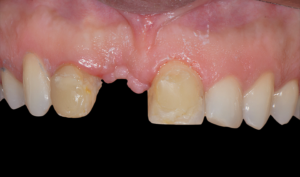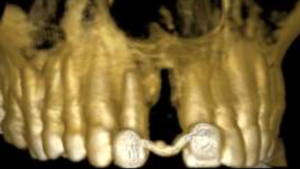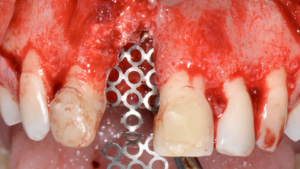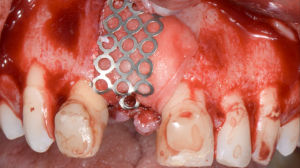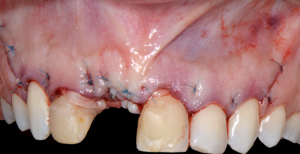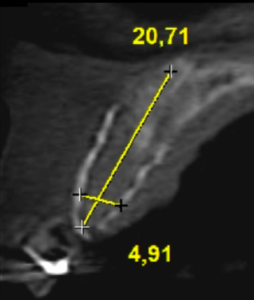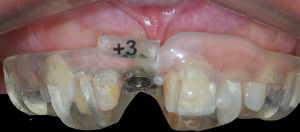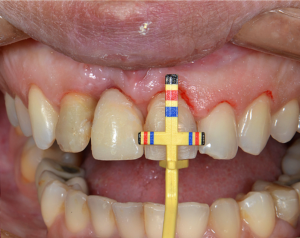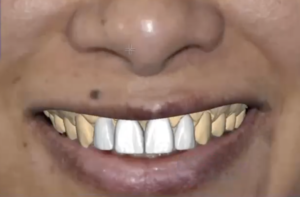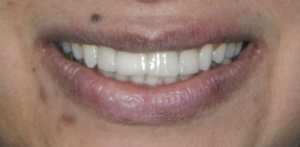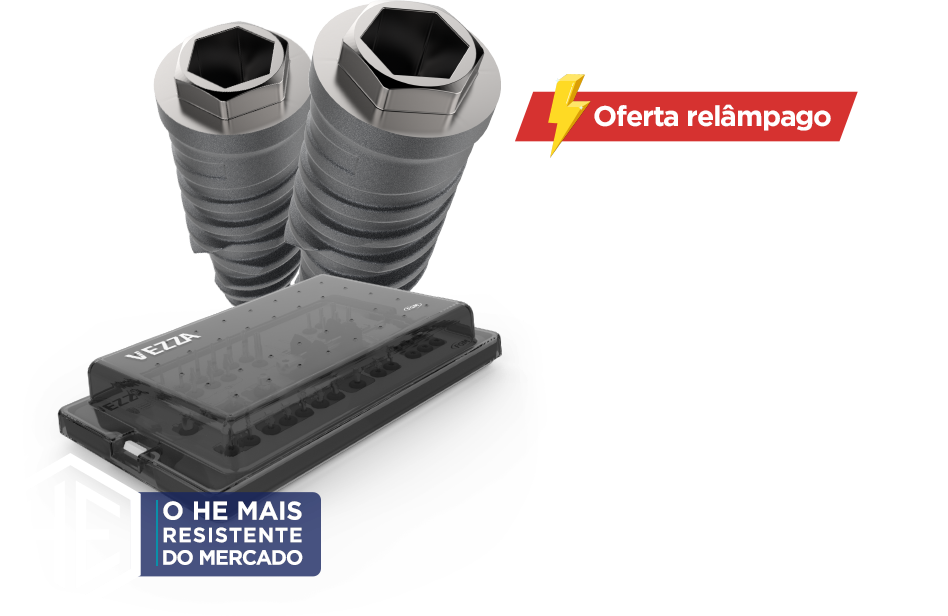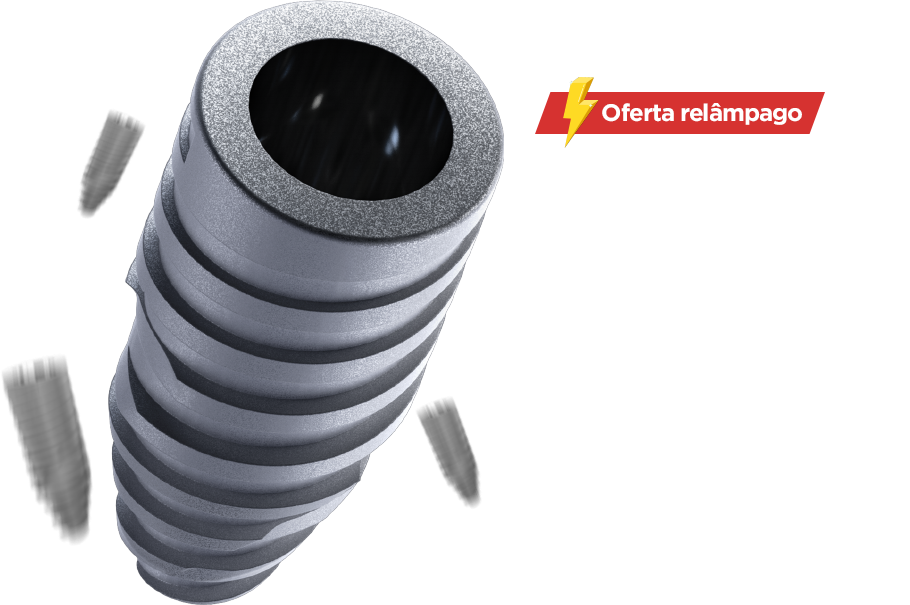Author: Dr. Augusto Bessa
Female patient, 36 years old.
Main complaint: Aesthetic and functional dissatisfaction related to the absence of element 11, due to a bone defect in the region.
Initial assessment:
The patient came to a private clinic, seeking prosthetic rehabilitation in the region of element 11. During the clinical examination, it was observed that the patient wore an adhesive prosthesis supported on the buccal surfaces of adjacent elements and had a bone depression in the region in question. In the tomographic examination, a defect of loss of the alveolar bone crests was observed, as well as a loss of buccal bone plate, which, according to the patient was caused by a failure to install an implant in the region in the past.
Treatment used:
To stabilize the PRF BLOCK, a titanium mesh was customized. The bone substitute of choice for guided bone regeneration (GBR) was a 200-500 µm Nanosynt biphasic ceramic, which was surrounded by a membrane, serving as a barrier to the GBR mechanism. The titanium mesh was then fixed by screws on the buccal and palatal sides, stabilizing the material in question. It is important to point out that the titanium mesh is not part of the regenerative bone process, having as its sole and important function to maintain the stability of the regenerative bone material. PRF membranes are placed above the mesh to minimize damage from possible exposure, and then suture with 5.0 polypropylene thread was performed.
After 9 months, an interesting bone formation was observed in the defect, however, for a greater predictability of the case, it was decided to perform a retouch in the reconstructive bone surgery for a greater gain in thickness. For this, the mesh was removed and the sausage technique was carried out for this purpose.
After 6 months, an Arcsys Implant 3.3 x 13 mm was planned and installed using Arcsys Guided Surgery (AGS). As a torque of 45 N.cm was obtained, it was possible to place a provisional prosthesis on the implant. After waiting for the osseointegration of the implant, planning for the corrections of the pink aesthetics began.
A connective tissue graft was planned to minimize the absence of the papilla between elements 11 and 12, following the case’s Digital Smile Design (DSD) planning. Gingival repair was done using a high-power laser, using the DSD and Chu’s proportionality rule as a reference.
Finally, after the gingival plastic surgery healed, planning the prosthetic rehabilitation began. Digital resources were used, taking the patient’s scan and photographs for digital wax-up of the smile, following the proportionality of the face and its personality. With the digital wax-up approved by the patient, prosthetic preparations were performed on the total crown elements number 12 (element that already had endodontic treatment), total crown on implant, on element 11, and veneer preparations on elements 21 and 22.
After 19 months of treatment, in which reconstructive tissue surgeries were performed on hard and soft tissues, the case was concluded.
Step by step:
